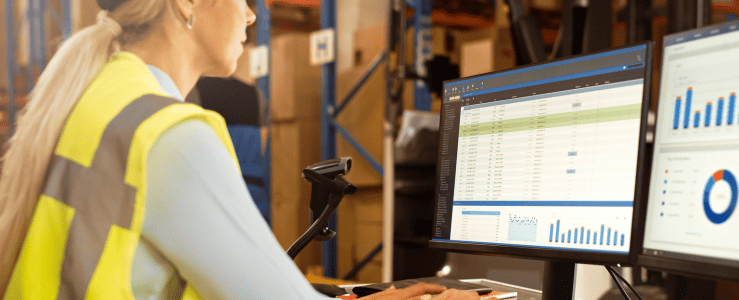Blog

Connecting SAP ECC to Salesforce: The business case not to wait for S4/HANA
SAP customers have been planning to begin the move to SAP S/4HANA for years. And this digital transformation initiative may still be looming for many more – along with a 12+ month implementation timeline once the process begins. And with less than 15% of SAP customers live on S/4HANA, you’re in good company if you are still deeply entrenched in SAP ECC.
Sales leaders expect IT to support their needs–from deploying various Salesforce clouds, to then connecting Salesforce to SAP to eliminate “swivel screen” – employees having to jump between systems just to run a normal course of business. If you haven’t heard your sales leaders, and employees, clamoring for this yet–listen more closely, because they probably are.
The case for Salesforce connectivity with SAP
It can be tempting to put off any system integrations – like SAP and Salesforce – until your SAP ERP digital transformation is done. But that thinking isn’t just short-sighted, it’s dangerous to revenue, margins, and customer retention.
Clients and distributors are bringing 21st century consumer expectations including:
- Fully functional eCommerce portals with all available products, configuration, and prices. And ATP too!
- Customer service reps that can place orders, give updated shipping and tracking information, and even dispatch field service all in a chat window or a quick phone call.
- Quotes that reflect up-to-the-minute availability (despite supply chain challenges) and 100% compliance to contract pricing and discounts.
- 24/7 online access to track orders and see past purchases without having to interact with your team members
- …and more
The speed of business can’t wait for your S/4HANA evolution to be completed. Reasons we often hear for delaying Salesforce-to-SAP ECC deployment include:
- We can’t take on a new IT project. That’s okay, you can outsource this task to a trusted partner, like enosix, to do the heavy lifting for you with a IT-resource-minimal model.
- We’re moving to S/4HANA in <whatever your timeframe is> and we can’t re-do work once we move. We totally understand. That’s why we created a purpose-built framework that works seamlessly with ECC and S/4HANA and–most important–we do the minimal lift-and-shift when you move from one system to the other.
- Our current eCommerce solution does most of what we need–our customers are fine. Are you sure they are fine only being able to order some of what they need through the portal and then waiting for business hours to call a sales rep to place the rest of the order? Complete eCommerce is the expectation and being hard to to business with is a huge risk.
Future-proof your solution
The solution you use to connect SAP ECC and Salesforce must be future-proof. What does that mean?
1. No middleware.
No duplication of business logic, pricing, product catalogs or any account-based data. It’s nearly impossible to map every data point and even if you do – you have to maintain a second data set forever. Every SKU change, ever configuration update, every contract price adjustment.
2. Re-use prebuilt integration processes.
In short, this means look for a solution that uses prebuilt RIOs (rapid integration objects) to cut out coding time and prevent data errors. These configurable but robust RIOs should work with your current SAP ECC system and, with minor IT lift from your vendor, elegantly move to SAP S/4HANA with little-to-no rework. (spoiler: this may seem like an impossible combination, but enosix does just that!)
3. Keep your externally-facing employees–sales, customer service, field service, etc. inside Salesforce as their day-to-day software solution.
Any time you pull them out of that–to go into SAP, to call someone to log in to SAP for them, to wait on approving a quote–that doesn’t just frustrate employees and drag productivity, it negatively impacts your customer/distributor experience.
More than ever, customers have more choices, and less patience, when it comes to purchasing. Ensuring your sales cycle has minimal friction, and maximum self-service, is critical–regardless of what ERP you are using. Don’t wait for your S/4HANA upgrade to begin–or worse, conclude–before addressing the immediate needs of your sales and customer service teams using Salesforce.
We’d love to talk about how enosix can help you in your transition–no matter where you are on your ECC to S/4HANA roadmap.


